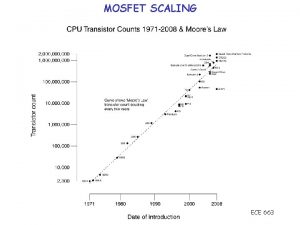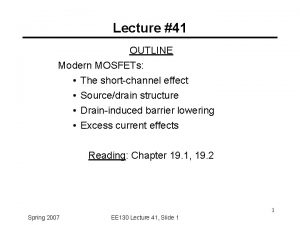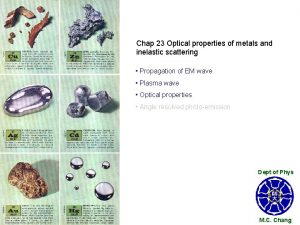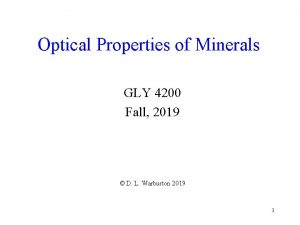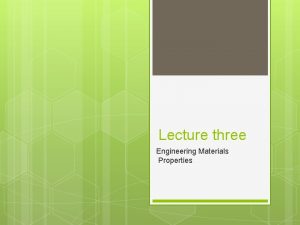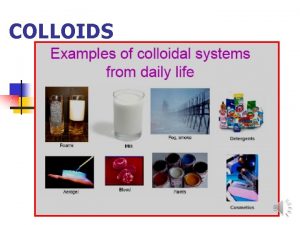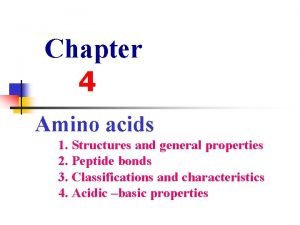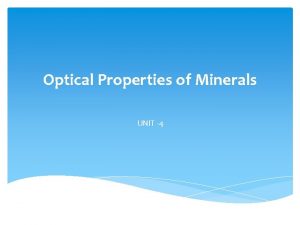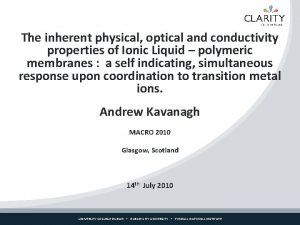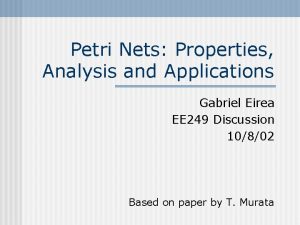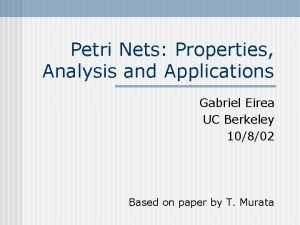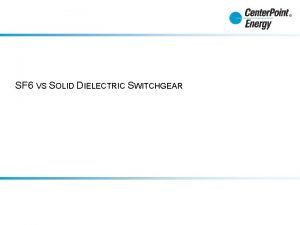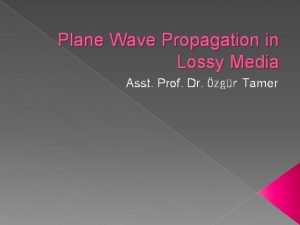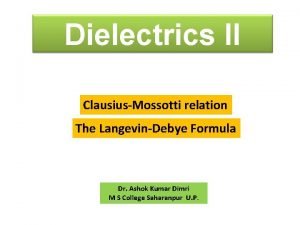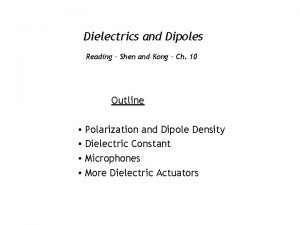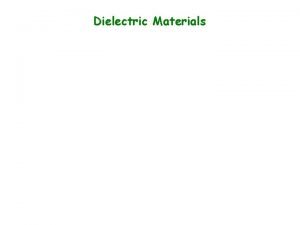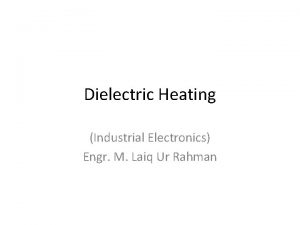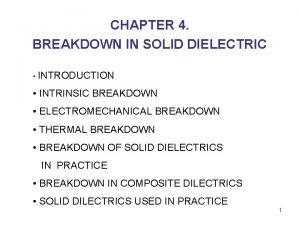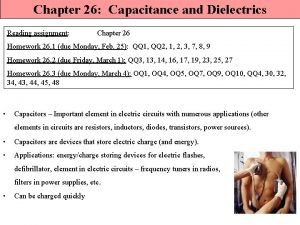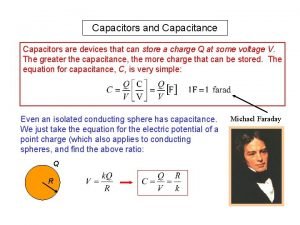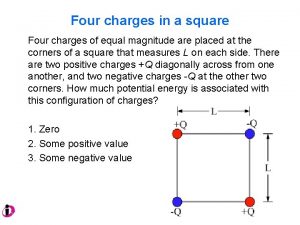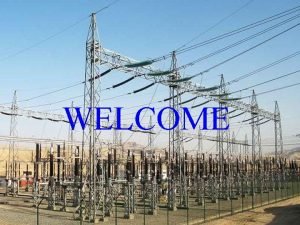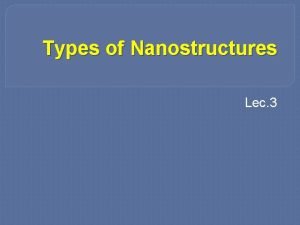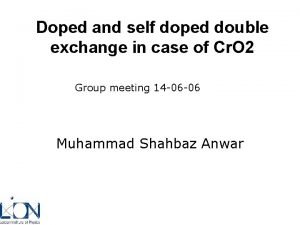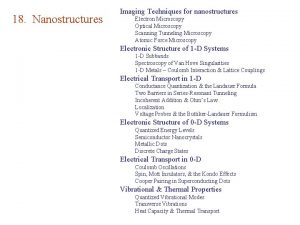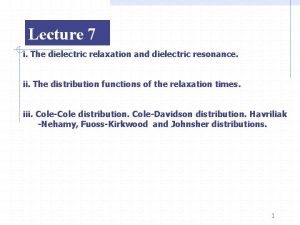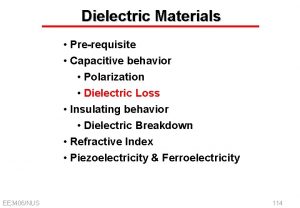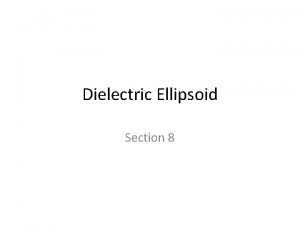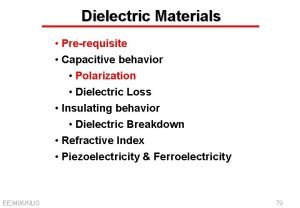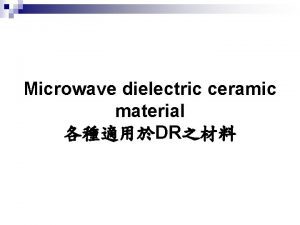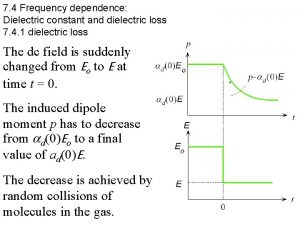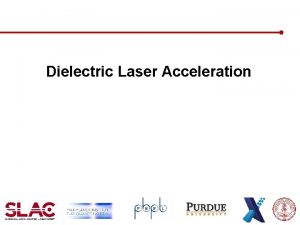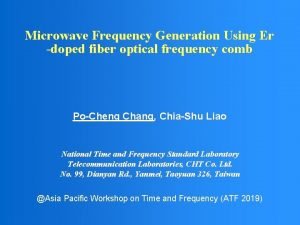Optical properties of dielectric nanostructures Motivation Applications Doped


























- Slides: 26

Optical properties of dielectric nanostructures

Motivation � Applications: › Doped crystals lasers (radiation-resistant) › Optical memory � Difficulties of investigation

Content Dielectrics Fluorites Quantum wells Nanostructures

Content Dielectrics Fluorites Quantum wells Nanostructures

Dielectrics � Non-conducting substance � “dia-electric” from Greek “dia” – “through” � No free charge carriers � Wide band gap > 5 e. V � Transparent in visible region � Ionic crystals � When doped exhibit semiconductor properties (Cd. F 2)

Content Dielectrics Fluorites Quantum wells Nanostructures

Fluorites: lattice structure � � � Face-centered-cubic unit cell Oh 5 symmetry The crystal is not piezoelectric Close contact between different species of ions or atoms Materials: › The halides: Ca. F 2, Cd. F 2, Ba. F 2… › The oxides: Zr. O 2, Ce. O 2… › The others… - Ca -F

Fluorites: energy-band structure Electronic configuration of ions Main features: › Electron effective mass is comparable to free electron mass (0, 5~1, 0 m 0 ) Ion 1 s 2 s 2 p 3 s 3 p Ca 2+ 2 2 6 F- 2 2 6 The valence band: › Maximum is in Г-point The conduction band: › Minimum is located in Гpoint Energy band formation 3 d The energy bands of Ca. F 2

Energy band structure Reflectance spectrum Fluorites: optical properties Transitions: reflectivity interpretation Region I I II III 11, 2 Г 15 -Г 1 13, 9 X’ 2 -X 3 15, 5 X’ 5 -X 3 25, 1 Г’ 25 -Г 15 Region II Outermost core state of metal ion Region III Interband ionizing transitions of core e-

Content Dielectrics Fluorites Quantum wells Nanostructures

Quantum wells Eg 1 Eg 2 Energy levels for infinite well Selection rule

Content Dielectrics Fluorites Quantum wells Nanostructures

KCl-KBr Multilayer Quantum wells Evaporation on to cleaved Li. F substarate Specimens: › SL 2: KBr 100 A-layer › C-ML: a double structure of KBr 100 A on KCl 200 A › D-ML: a triple structure of KBr 100 A sandwiched by two KCl 200 A › E-ML: a 3, 5 periods one of KCl 150 A – KBr 50 A

KI-KBr and KI-KCl Multilayers Evaporation onto a quartz glass substrate Specimens: › KI layer is sandwiched between KBr layer of the same thickness

KIx-KBr 1 -x mixed crystal films Blue shifts: › Quantum confinement effects › Interlayer mixed crystallization

12. 1 e. V Ca. F 2 8 e. V Cd. F 2 Lattice constants: Ca. F 2 5, 46 A 0 Cd. F 2 5, 39 A 0 Si 5, 43 A 0 Ca. F 2 Cd. F 2 Si Ca. F 2 Energy difference at the interface Ca. F 2/Cd. F 2: 2, 9 e. V in the conduction band 1, 2 e. V in the valence band Ca. F 2 -Cd. F 2 heterostructures on Si Opposite sing of the fluoride lattice mismatch to Si flavors strain compensation and growth of pseudomorthic superlattices � Specimens: › › › › 1: Si-Ca. F 2(30 ML)-Ca. F 2 2: Si-Ca. F 2 -Cd. F 2(10 ML)-Ca. F 2 3: Si-Ca. F 2 -Cd. F 2(30 ML)-Ca. F 2 4: Si-Ca. F 2 -Cd. F 2(90 ML)-Ca. F 2 5: Si-Ca. F 2 -6 x[Ca. F 2(5 ML)-Cd. F 2(5 ML)]-Ca. F 2 6: Si-Ca. F 2 -14 x[Ca. F 2(2, 5 ML)-Cd. F 2(2 ML)]-Ca. F 2 7: Si-Ca. F 2 -3 x[Ca. F 2(10 ML)-Cd. F 2(10 ML)]-Ca. F 2

To add transitions Ca. F 2 -Cd. F 2 heterostructures on Si Ca. F 2 -Cd. F 2 10 ML Ca. F 2 -Cd. F 2 5 ML Ca. F 2 -Cd. F 2 2 ML Ca. F 2 -Cd. F 2 90 ML Ca. F 2 -Cd. F 2 30 ML Ca. F 2 -Cd. F 2 10 ML Ca. F 2

The harmonic oscillator model - complex dielectric constant - refractive index - reflection coefficient - reflectivity

Ca. F 2 harmonic approximation Oscillators parameters: oscillator resonance energy dumping param amplitude 0 11, 49 0, 25 1, 24 1 0, 5 1, 9 2 0, 7 3, 8 3 1, 5 4, 4

Ca. F 2 -Cd. F 2 heterostructures on Si Future plans: › › To calculate phase of reflective index To calculate reflectance spectrum from thin films To estimate energy level shifts in quantum well To estimate interface effects

Nanoislands: low temperature growth 1 Ca. F 2 multilayer at 4500 C Ca. F 2 nanoislands stretched along <110> direction Bare Si surface between Ca. F 2 islands

Ca. F 2 stripes: high temperature growth 6 Ca. F 2 multilayers at 7000 C Ca. F 2 stripes are aligned along <110> direction Stripes length – several microns, height – 3 -6 nm Formation of wetting layer

MBE-growth of Ca. F 2/Cd. F 2 superlattices X-Ray diffraction TEM 6 ML 4 ML High crystalline quality 10 ML T/2

Thank you for attention

The first Brillouin zone of the facecentered-cubic fluorite lattice

Reflectance spectrum of Ca. F 2/Cd. F 2 superlattices
 Mosfet scaling
Mosfet scaling Lightly doped drain
Lightly doped drain Dielectric properties of food
Dielectric properties of food Motivation from concepts to applications
Motivation from concepts to applications Optical properties of metals and nonmetals
Optical properties of metals and nonmetals Optical properties of minerals
Optical properties of minerals Optical properties of engineering materials
Optical properties of engineering materials Tyndall effect
Tyndall effect Properties of amino acids
Properties of amino acids Perpendicular
Perpendicular Inherent optical properties
Inherent optical properties Colligative properties of solution examples
Colligative properties of solution examples Costherm
Costherm Petri nets properties analysis and applications
Petri nets properties analysis and applications Petri y gabriel
Petri y gabriel Solid dielectric switchgear
Solid dielectric switchgear Intrinsic impedance of lossy dielectric medium
Intrinsic impedance of lossy dielectric medium Dielectric heating
Dielectric heating Clausius mossotti relation for dielectric
Clausius mossotti relation for dielectric High k dielectric
High k dielectric Dielectric medium
Dielectric medium Dielectric heating
Dielectric heating Electromechanical breakdown in solid dielectrics
Electromechanical breakdown in solid dielectrics Capacitor reading
Capacitor reading Capacitors are devices that
Capacitors are devices that Charges in a square
Charges in a square Transformer insulation test
Transformer insulation test
